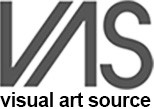Robert Kingston's work draws viewers into a visual exploration where the story rests between innumerable applications of paint. His practice revolves around the development and modification of ideas that gradually move towards a personal vision that draws from ancient cultures, mythology music and history.
Kingston's gestures, erasures, pigmented smudging, scraping and dripping build and fade into vast, gauzy spaces. At times, the paint is controlled and then allowed to find gravity, and is then contained again, creating deep veils of acrylic. These are intuitive moves that rely on navigating numerous material layers while maintaining the characteristic expanses of his work. Within the canvases' spaces are thrusts of color and jostling lines, smears of paint and graphite sketches that conjure an aggregate of ancient, scientific, organic, industrial hieroglyphs.
Within Kingston's breathy, atmospheric movements are suggestions of watery and arid landscapes, yet the work remains firmly planted in the language of abstraction. The paintings speak to a range of emotions and influences; shifting from placid to energetic, structured to improvised, sober to playful, Kingston's paintings are a steady, engrossing read that gradually reveal their history and resolve.
Yoichi Kawamura is a Los Angeles-based photographer whose work moves beyond documentation and seeks to understand and express realities that are both seen and unseen. Photographs of the ocean, Midwest Plains and the desert are dominated by vast openness, with the context left to a thin slice at the bottom of the picture plane. In these intuitively composed landscapes, the simple yet prominent horizon line represents a philosophical gateway, rather than a boundary; emptiness refers back to the inner place of self and infinite meaning. Drawing from the philosophies of Zen Buddhism, Joseph Campbell and Mircea Eliade, Kawamura's work seeks to connect the physical world with inner consciousness.
"The images represent the moment where we, as physical beings, touch the ethereal world. Where we can choose open space and gently, passionately, visually, emotionally, spiritually, physically, and meaningfully experience the point of release between the Eternal and Carnal worlds." "Carnal space," he continues, "is essential, a prerequisite for life. Our bodies are a product of nature, made from materials in the universe that produce impulses and needs that result in the creation of our material world: a world of time and space, a world of suffering and sorrow, a world of reality. Eternal space is that which is seen but not felt. Called emptiness or nothingness in Buddhist traditions, it is timeless and infinite, the sublime. Never nihilistic but expansive like the universe, it is inside us and exists without judgment."






